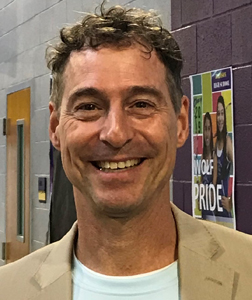Texas Hold’em:
Engaging Employers to Close the Skills Gap
Anson Green
 Anson Green is an adult education, workforce, and community college trailblazer. His passion is deploying innovative services for low-skilled Texans to meet their life ambitions. He loves challenging legacy perspectives and developing pioneering solutions. Mr. Green led the transformation of the over $80 million Texas adult education program into a workforce solution for dropouts and immigrants seeking responsiveness to their college and career aspirations. He’s a full partner to Texas employers in supporting Texas economic growth. Mr. Green has served as a national research fellow, has spoken to congressional briefings on effective approaches to middle-skill advancement, and had teaching posts at several colleges, universities and public schools.
Anson Green is an adult education, workforce, and community college trailblazer. His passion is deploying innovative services for low-skilled Texans to meet their life ambitions. He loves challenging legacy perspectives and developing pioneering solutions. Mr. Green led the transformation of the over $80 million Texas adult education program into a workforce solution for dropouts and immigrants seeking responsiveness to their college and career aspirations. He’s a full partner to Texas employers in supporting Texas economic growth. Mr. Green has served as a national research fellow, has spoken to congressional briefings on effective approaches to middle-skill advancement, and had teaching posts at several colleges, universities and public schools.
Abstract
In 2014, the federal Workforce Innovation and Opportunity Act (WIOA) thrust adult educators into a dramatically new landscape of service expectations and partnership requirements to increase the ability of providers to meet the employment needs of students and employers. The coronavirus pandemic created an accelerating demand for adult education services that lead to reemployment for individuals who have been laid off. Employer engagement can have a tremendous impact on adult education’s ability to lead to employment solutions. This article describes solutions Texas found as it successfully developed a market-driven adult education system to deliver to employers, learners, and other system customers, a new model for defining student success. After a brief discussion regarding the Texas business and economic climate; and factors that drove, in part, the Texas legislature to transfer the program into the state’s labor department a year before WIOA, the article describes demonstrated methods and examples across five dimensions that tell Texas’ story. These examples provide state and local leaders ways to meet the demands of WIOA and the expectations of students, employers, and system partners.

